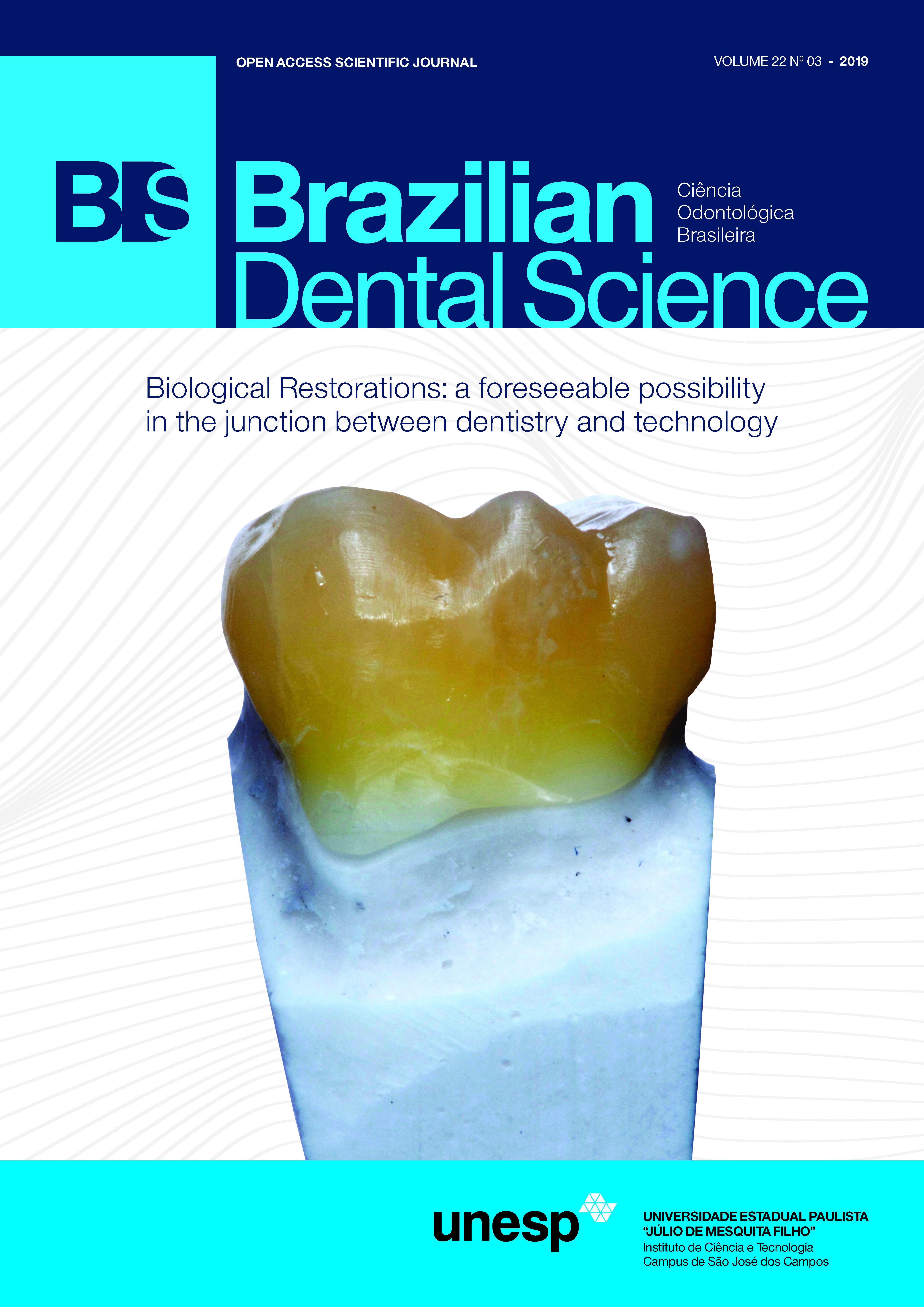How do the optical properties of the bulk fill posterior composites change after 2 years of simulated toothbrushing?
DOI:
https://doi.org/10.14295/bds.2019.v22i3.1752Abstract
The objective of this study was to evaluate the alteration of the optical properties of bulk Fill resin-based composites after 2 years of simulated toothbrushing. Three high-viscosity bulk fill resin composites and one conventional sculptable resin composite (control) were analyzed. Five specimens of each resin composite were prepared, and roughness, color, translucency and gloss were evaluated initially and after one and two years of simulated toothbrushing. The specimens were submitted to electric simulated toothbrushing (14600 strokes/100g) using a commercially available toothbrush with soft fibers and toothpaste slurry in a proportion of 1:2 by weight. The brushing scheme was of 40 cycles per day (2 cycles per second / 280 cycles in a week). The optical properties and the roughness data were analyzed by a multifactor analysis of variance (MANOVA) and a Tukey post hoc test. The baseline and final values of Ra and Sa were submitted to linear regression analyses, all of which were performed at a significance level of p=0.05. Gloss and roughness presented statistical differences between the resin-time interactions in all composite resins. The gloss (72.5%) and roughness (89.4%) worsened significantly after brushing, but the authors didn’t find statistically significant differences when evaluating translucency and color. Based in the results, it could be concluded that the simulated brushing degraded the brightness and roughness of the used high-viscosity bulk fill composites.
Downloads
Downloads
Additional Files
Published
How to Cite
Issue
Section
License
Brazilian Dental Science uses the Creative Commons (CC-BY 4.0) license, thus preserving the integrity of articles in an open access environment. The journal allows the author to retain publishing rights without restrictions.
=================




























